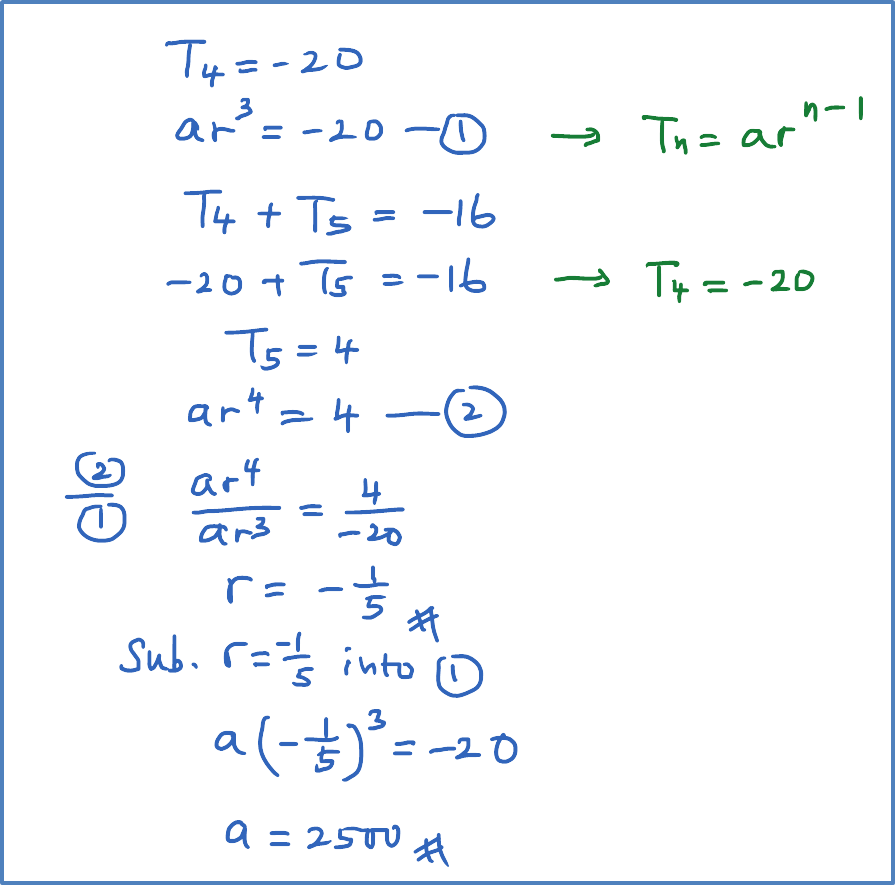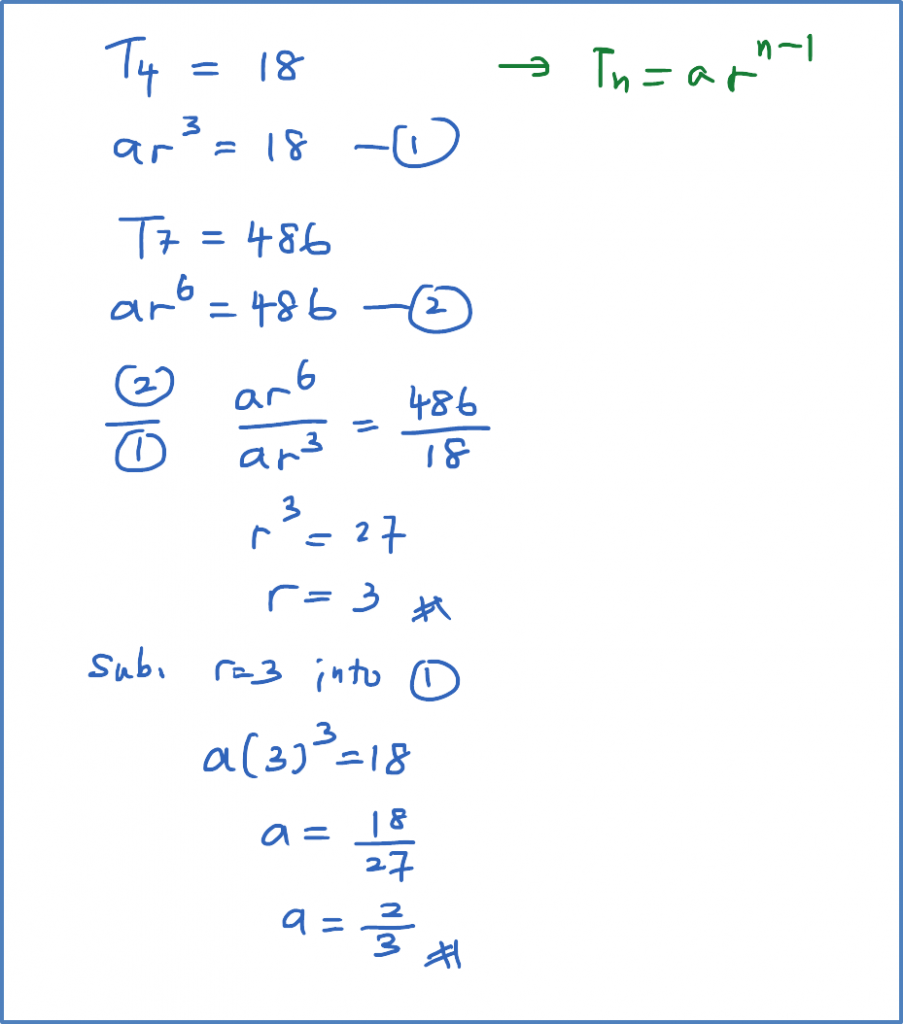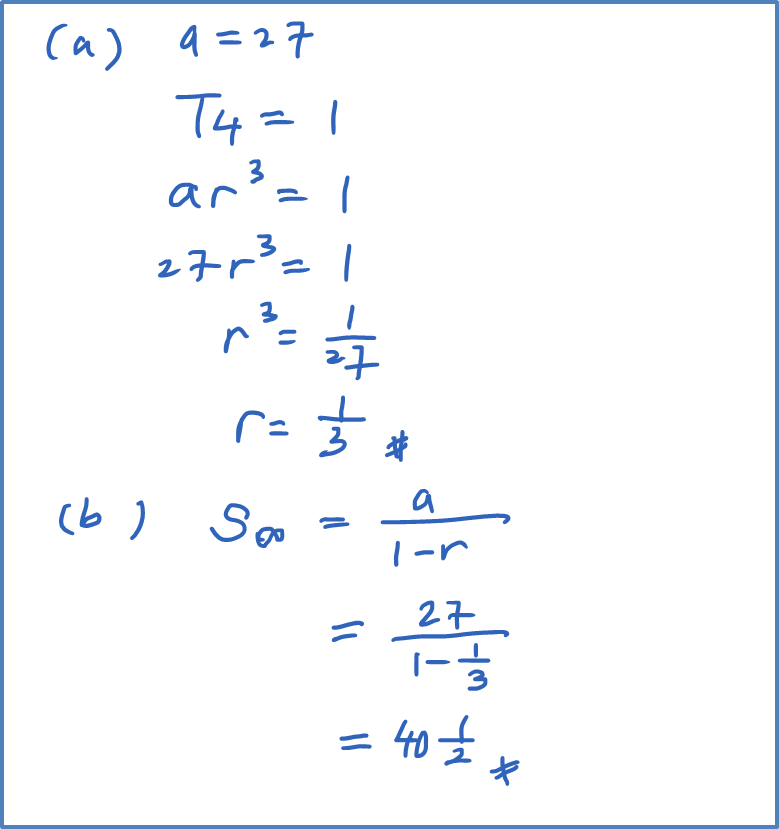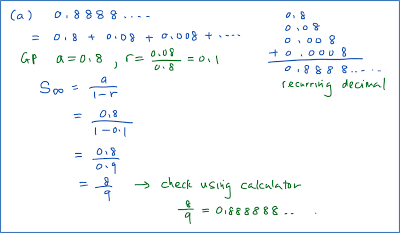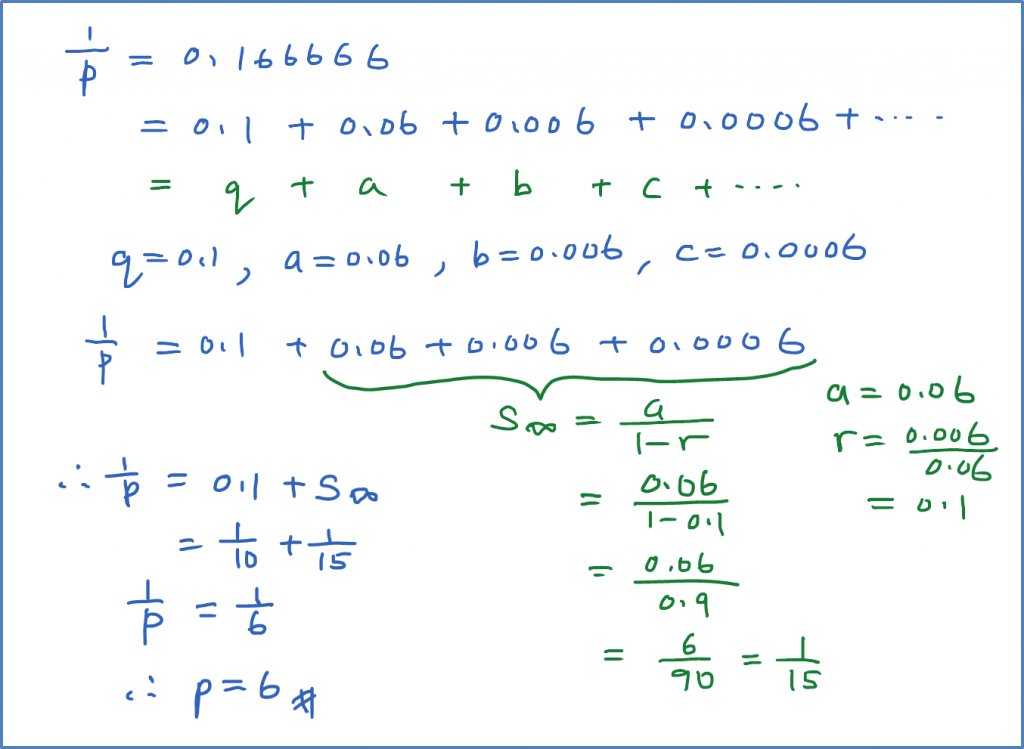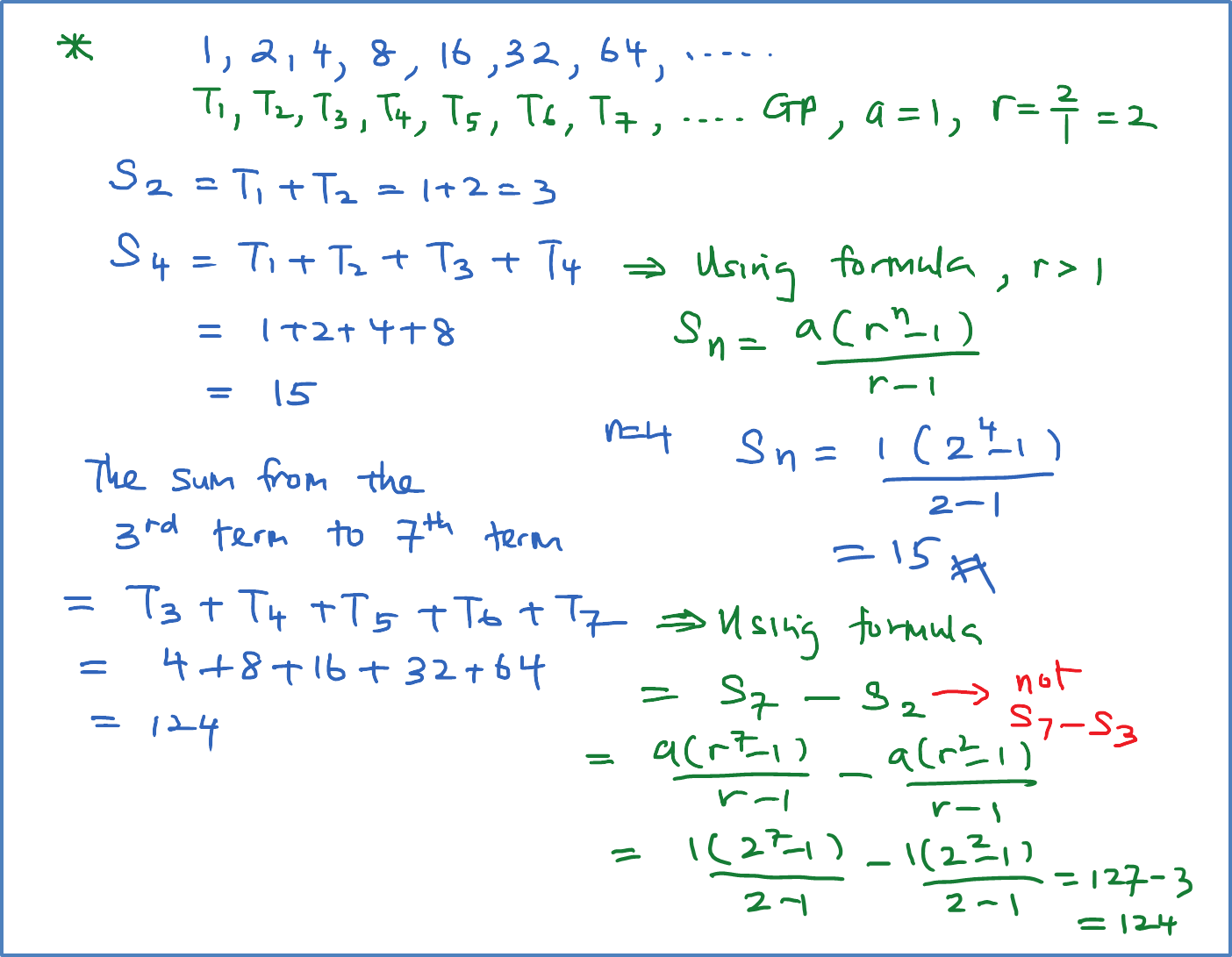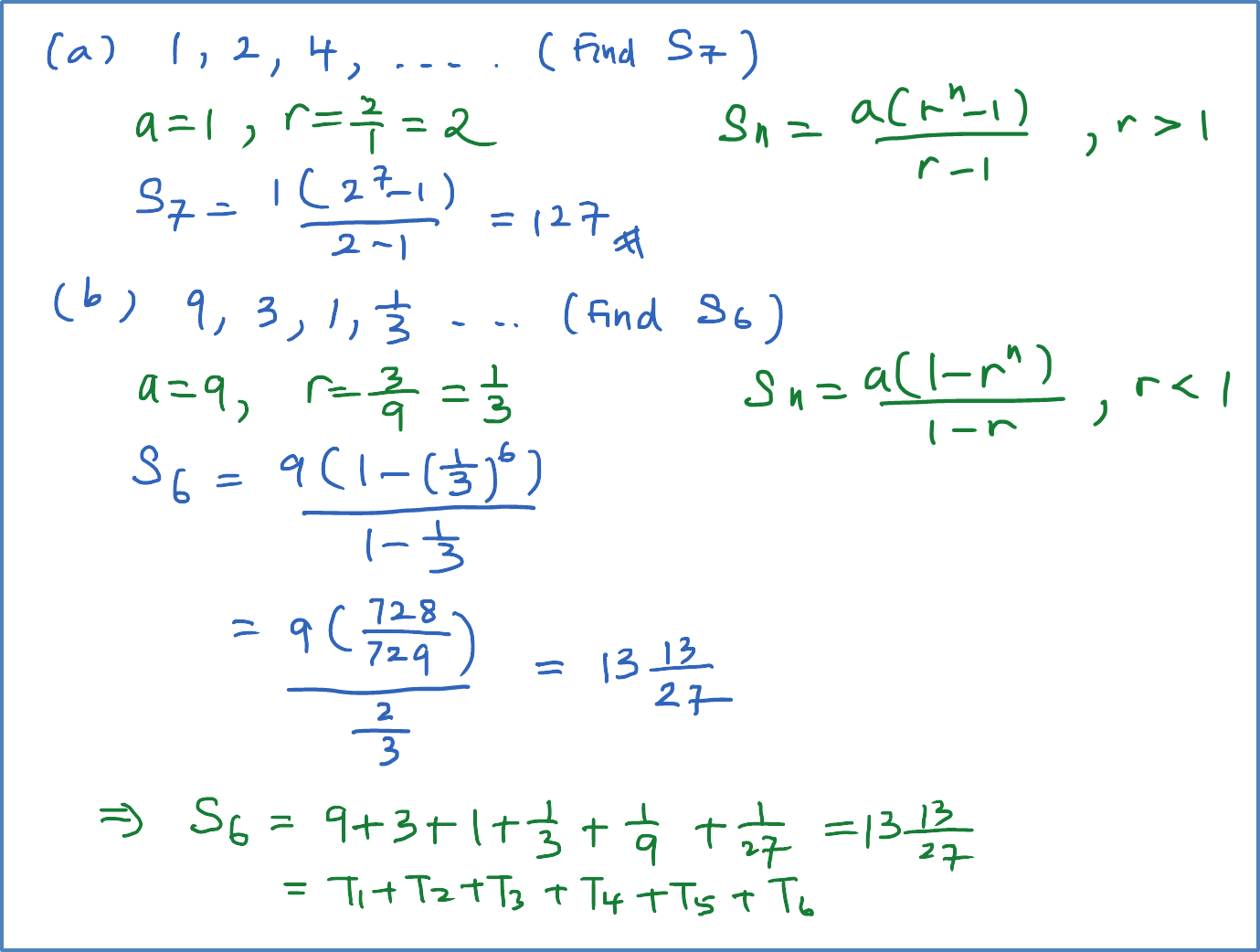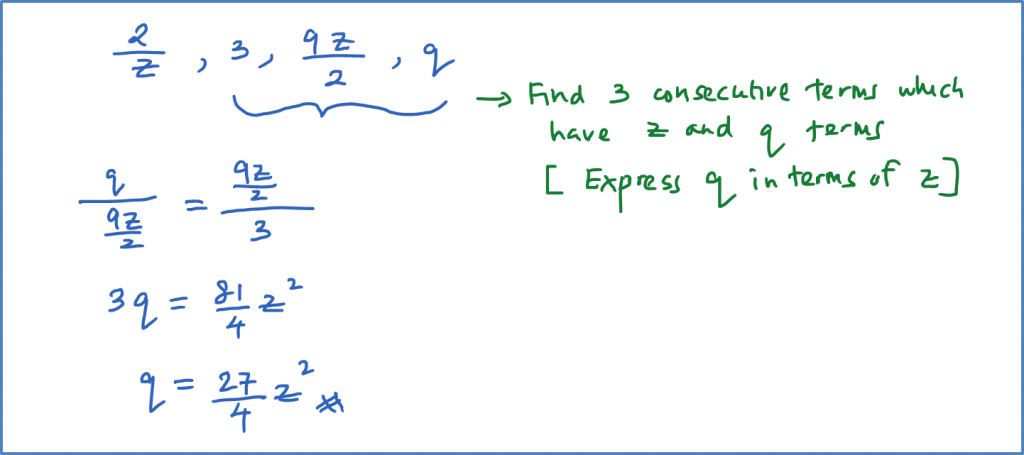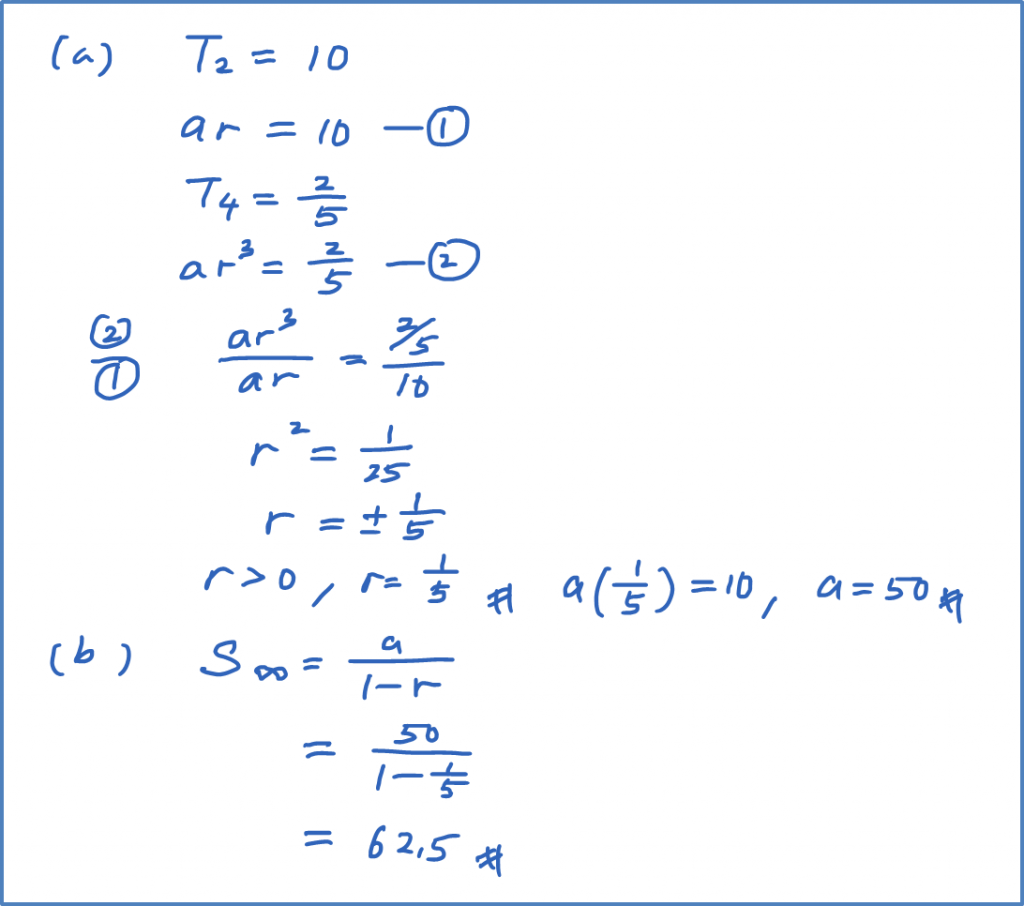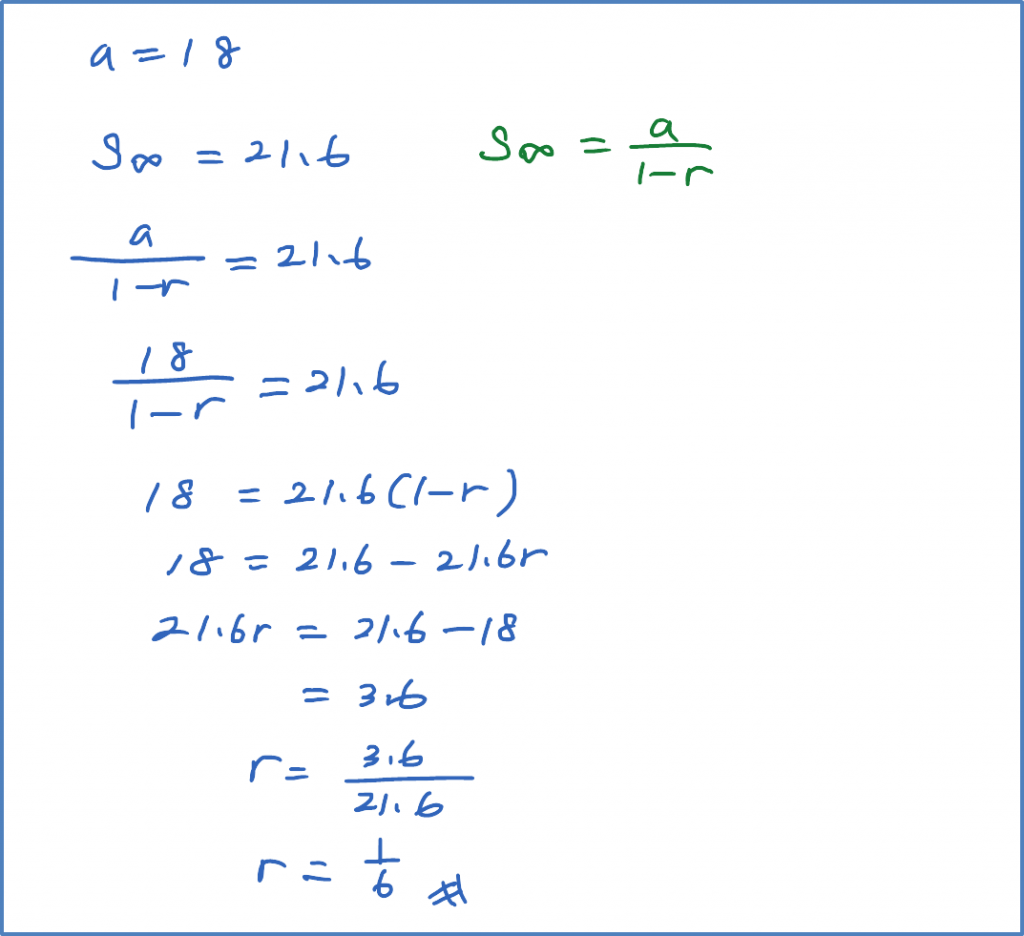1.2.3 Sum of the First nTerms of an Arithmetic Progression
(F) Sum of the First n terms of an Arithmetic Progressions
Sn=n2[2a+(n−1)d]Sn=n2(a+l)
a = first term
d = common difference
n = the number of term
Sn = the sum of first n terms
Example:
Calculate the sum of each of the following arithmetic progressions.
(a) -11, -8, -5, ... up to the first 15 terms.
(b) 8, 10½, 13,... up to the first 13 terms.
(c) 5, 7, 9,....., 75 [Smart TIPS: The last term is given, you can find the number of term, n]
Solution:
−11,−8,−5,.....FindS15a=−11,d=−8−(−11)=3S15=152[2a+14d]S15=152[2(−11)+14(3)]=150
(b)
8,1012,13,.....FindS13a=8d=1012−8=52S13=132[2a+12d]S13=132[2(8)+12(52)]=299
(c)
5,7,9,.....,75←(The last terml=75)a=5d=7−5=2Sn=n2(a+l)S36=362(5+75)=1440The last terml=75Tn=75a+(n−1)d=755+(n−1)(2)=75(n−1)(2)=70n−1=35n=36
